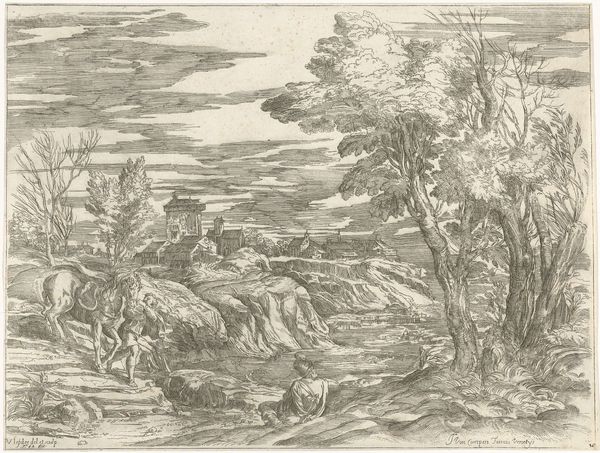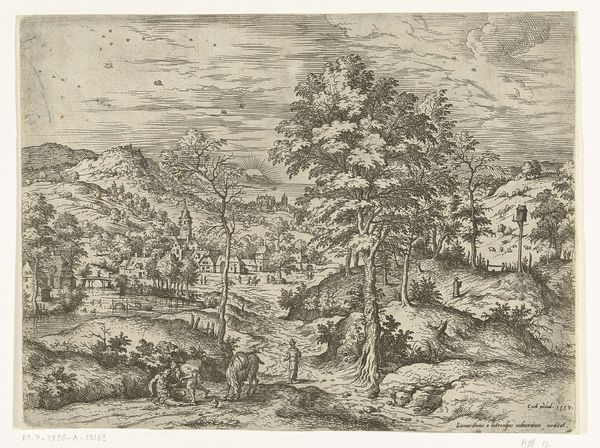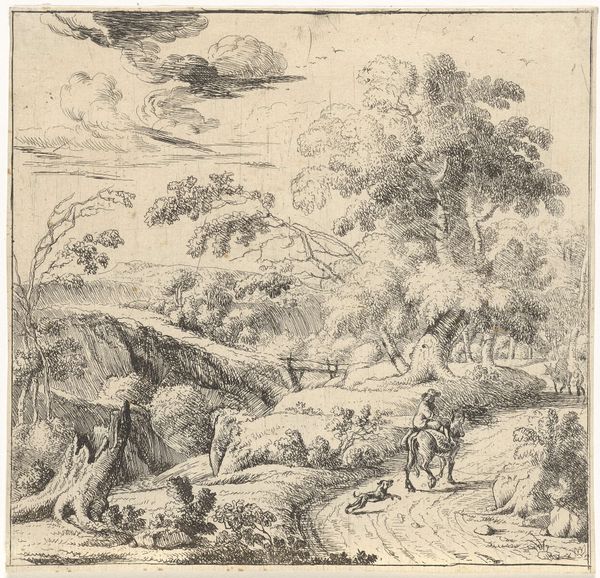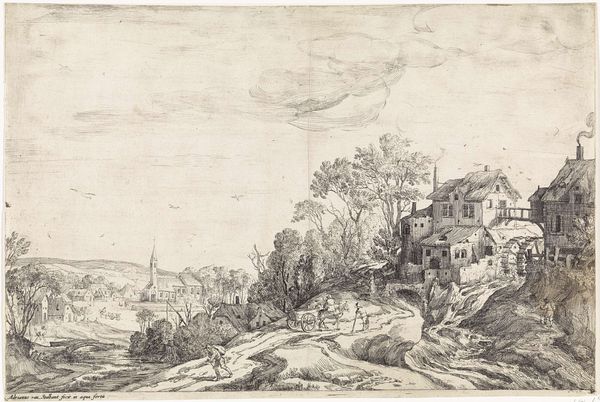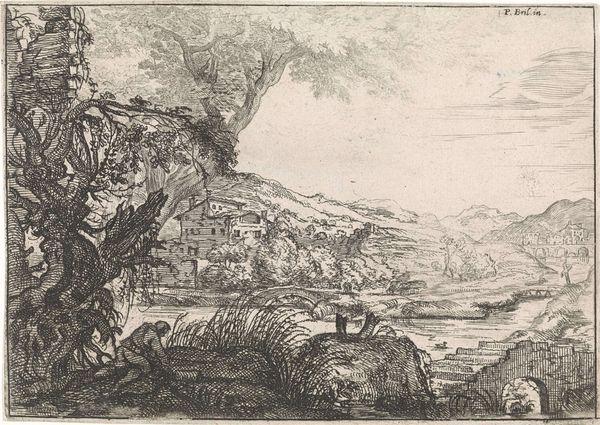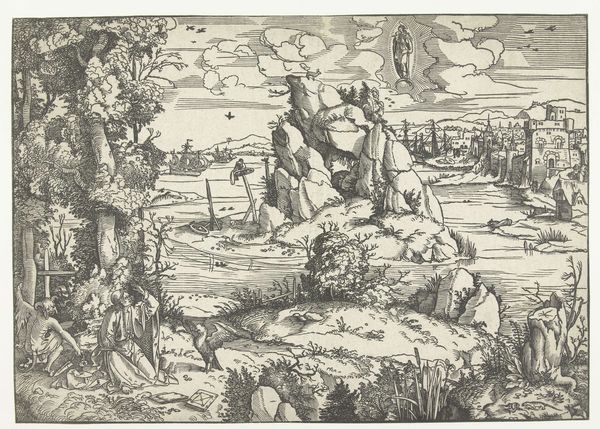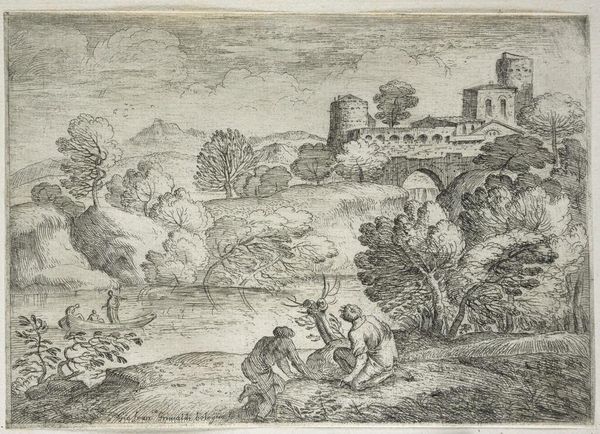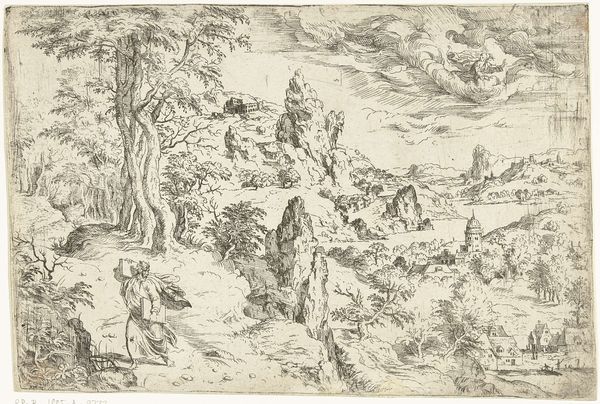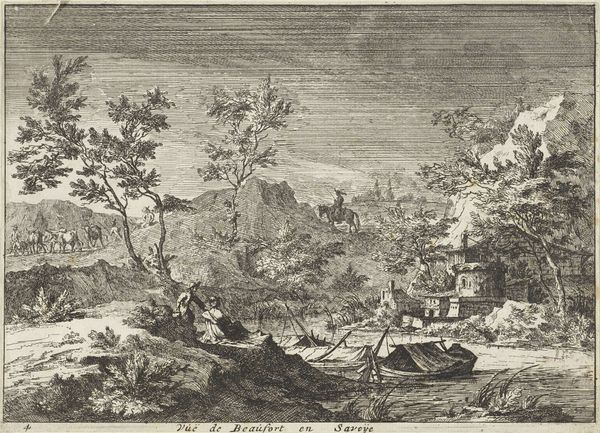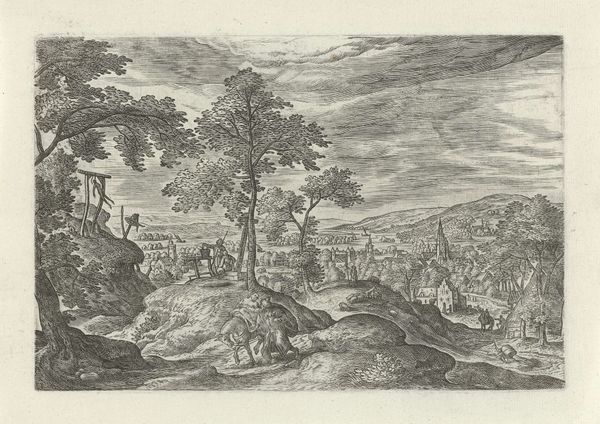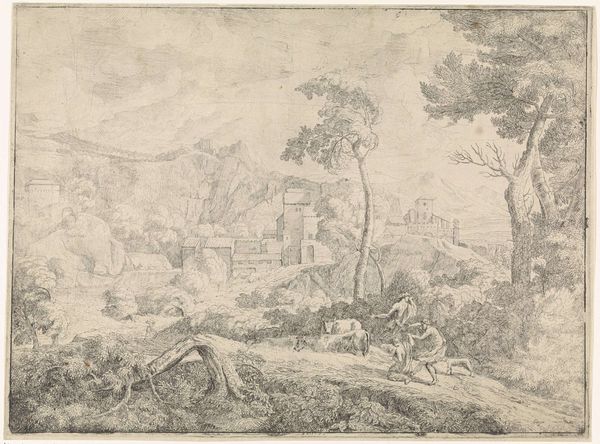
drawing, ink
#
drawing
#
baroque
#
landscape
#
ink
#
genre-painting
Dimensions: height 311 mm, width 436 mm
Copyright: Rijks Museum: Open Domain
Curator: This captivating work is titled "Landscape with a Shepherd Playing the Flute" by Valentin Lefebvre, created around 1682 using ink on paper. The artwork presents a bucolic scene reminiscent of the Baroque period. Editor: There’s an almost frenetic energy to this image. The etched lines are so dense and active; it conveys a real sense of movement throughout the composition. It’s darker than I expected. Curator: It’s a wonderful example of Lefebvre's drawing ability, where the etching process, and printing technology itself, allow for a circulation of imagery related to pastoral life, consumed by elite society. Editor: Absolutely. The detail lavished on depicting sheep and shepherd, the material prosperity signaled by the boat in the harbor, reflects consumption patterns within 17th century society. The work offers the spectacle of ideal country life, but filtered, of course, for a refined urban audience. Curator: And you see how the artist organizes our viewing experience to encourage such an audience reception through spatial ordering? We look upon a hierarchy, with workers in a natural setting. But the labor is happening as leisure for others on holiday, near urbanity. It all points to the socio-political relationships prevalent at the time. Editor: Yes, the relationship is critical. You’ve mentioned the printing process as pivotal for its widespread availability, but the scale of the artwork as printed matters just as much. It would typically be displayed in rooms with precious commodities to signify good taste, social standing, and wealth through an elevated ownership experience. Curator: It also offers us insight into Lefebvre's role. Trained as a painter, yet his labor ends in printed materials. Was this a more accessible profession at the time? Were traditional art boundaries broken, where craft was held equal? This would mean re-evaluation is required for artists like Lefebvre. Editor: It’s fascinating to think about Lefebvre as negotiating various art contexts through different approaches, all reflecting specific socioeconomic conditions. The tension between artistry and industry definitely frames how we should consider this work. Curator: Indeed. It is a window into 17th-century art practices, challenging us to consider the multiple layers of production, dissemination, and reception that shape our understanding of art history. Editor: A deeper dive reminds us art's beauty exists as an extension of a labor pipeline that connects us through the centuries.
Comments
No comments
Be the first to comment and join the conversation on the ultimate creative platform.
